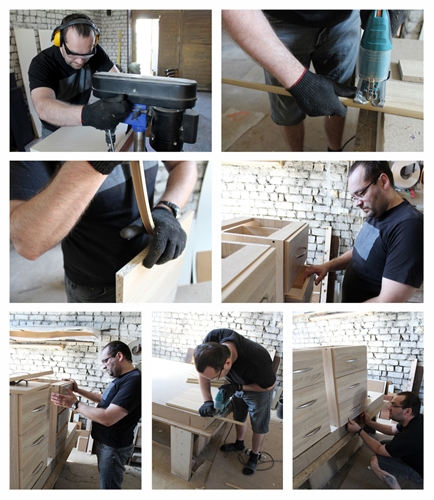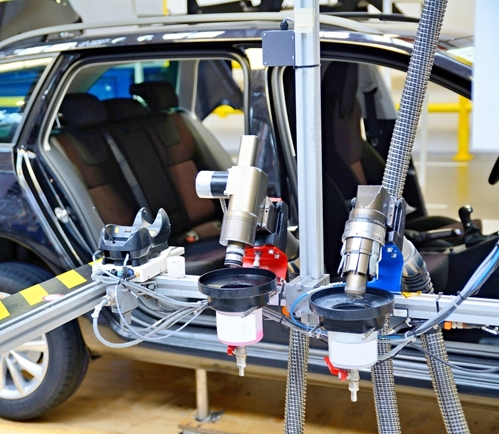

- Contributions by industrial experts with engineers in mind
- Focused on specialty-chemical material applications and selection
Knowledge Center
Hot Melt Adhesives in Furniture Construction and Woodworking

Hot Melt Adhesives for Furniture and Woodworking
The furniture and woodworking industry is extremely large and varied - ranging from all-wood construction to metals, composites and foams. While the industry draws on techniques hundreds of years old, modern advances in materials have necessitated modern assembly methods. The industry is increasingly relying on adhesives, which offer advantages over mechanical fasteners, and can bond dissimilar substrates. New adhesives allow for faster, cheaper production and a more aesthetically pleasing product. These adhesives can also reduce or eliminate health and VOC concerns associated with older methods. Hot melt adhesives (HMA) play an important role in the industry from edgebanding and laminating wood products to mattress and construction.
What are hot melts?
Hot melts are so called because they are sold in a solid form, melted in dispensing equipment, and applied hot to the surface or surfaces they will join. They have a good initial tack/green strength, allowing quick processing. HMAs form bonds as they cool into a thermoplastic resin. This final cured thermoplastic can have variety of properties depending on the unique formulation, but is generally flexible, somewhat resistant to water and chemicals, and stable in temperatures below the original melting temperature. There are two classes of HMAs, reactive and nonreactive. Nonreactive HMAs cure only through cooling, but reactive HMAs also cure through chemical reactivity to form crosslinked bonds that can increase adhesion, resistance and other properties. Ethyl-vinyl- acetate (EVA) is the most common form of nonreactive hotmelt. Reactive hotmelts can be based on a number of, polyol prepolymers but the most common is polyurethane (HMPUR).
"HMAs form bonds as they cool into a thermoplastic resin."
HMAs are ideal for integration into assembly line manufacture. They are sold in a variety of sizes, from individual application, to bulk quantities of solid pellets or sticks. They have an excellent shelf-life and can be simply loaded into melting apparatus when needed.
How are hot melt adhesives used?
Hot melts are the perfect solution to a number of operations in the furniture and woodworking industry. Because they can be applied easily and quickly to large volumes of material, HMAs are well-suited to applications where high throughput is desirable.
- Flat Lamination - HMAs are often used in the application of CPL (Continuous Pressure Laminate) and HPL (High Pressure Laminate), as well as veneer or foil to the flat face of MDF or chipboard. Nonreactive HMAs are lightweight, fast-melting and economical. Reactive formulations can allow bonding to traditionally difficult-to- bond materials. They tolerate higher heat than nonreactive formulations and also offer moisture resistance - of particular importance for use in kitchen and bath panels.
- Edgebanding - HMAs are also well-suited to applying a finished surface to panel edges. Here again nonreactive HMAs provide a more economical choice and easier cleanup, while allowing for high-quality results. Reactive HMAs are a standard in high heat and moisture areas. Special techniques that involve pre-treating surfaces with adhesive can be used to achieve minimal bondlines.
- Profile Wrapping - Applying foils, laminates and veneers to complicated wood profiles can be challenging, but HMAs along with precise roller systems can meet the task. Slot-nozzles are often used for application here instead of rollers. Traditional EVA hot melts work well with CPLs and foils on complicated profile cores. Reactive HMAs again provide higher heat and moisture resistance, as well as adhesion on thermoplastic foils.
- Mattress and Foam - Bonding in these materials must stand up to long-term repeated use - flexibility and strong bonds are key. Specific formulations of nonreactive HMAs are frequently used for pillow-top, foam encasement and frame bonding. Reactive HMAs are used in the making of materials that will need to be sterilized with high heat and water.
How are HMAs applied in furniture and woodworking?
There are a number of application methods available for HMAs in furniture construction. One of the simplest and most economical choices for high-volume production is rollers that have been integrated into the assembly system. Solid adhesive can be added to the equipment which then melts and applies the adhesive to the piece as it passes through the system. Various types of spraying are also options from slot-nozzle type dispensers to hand-held systems. The system used will depend on the types of bonding, material being adhered, adhesive used and throughput.






